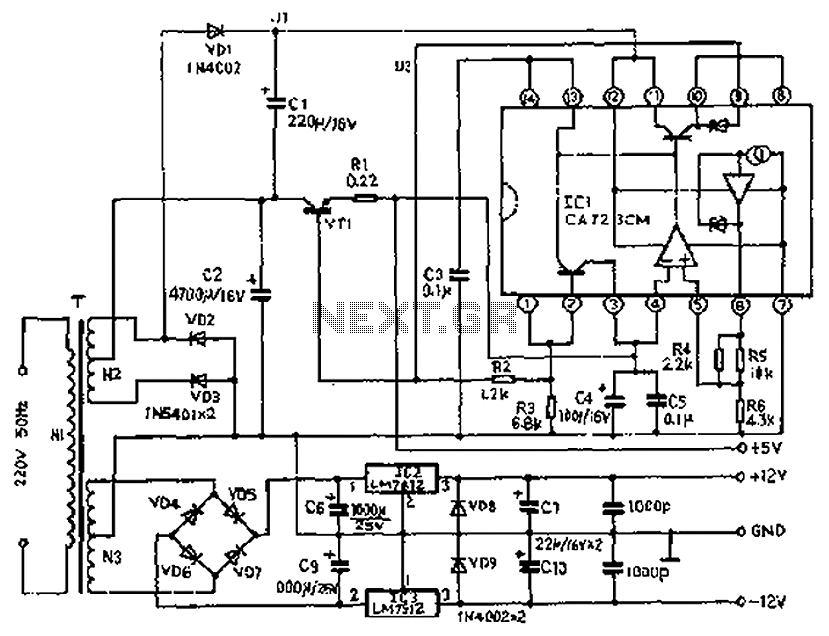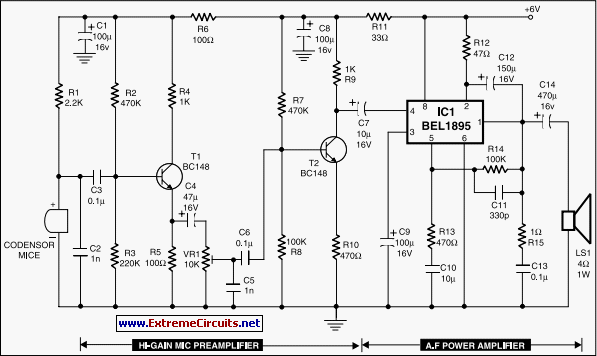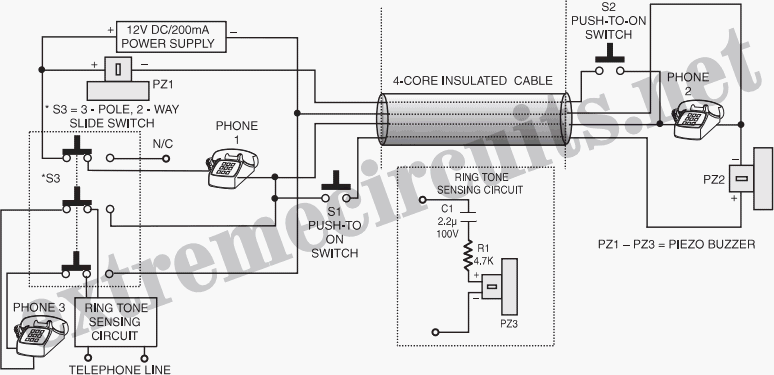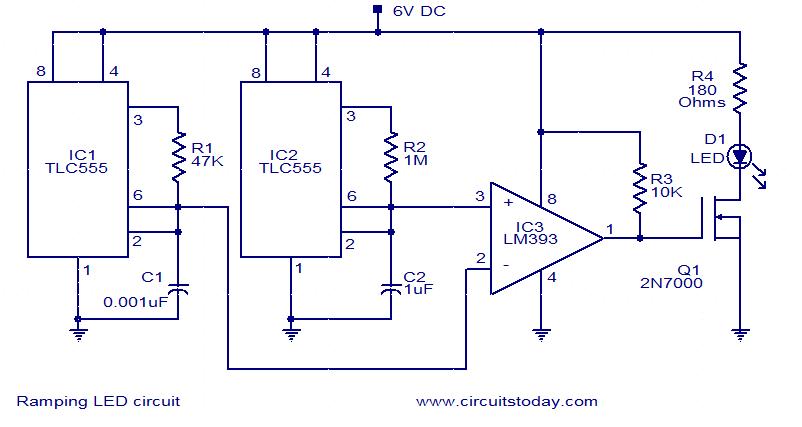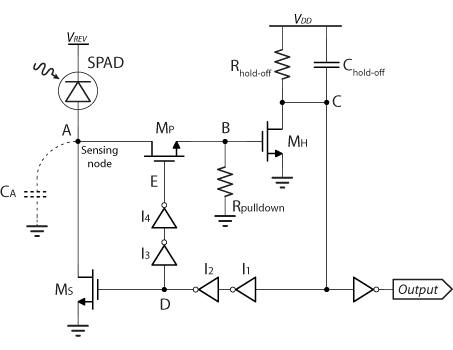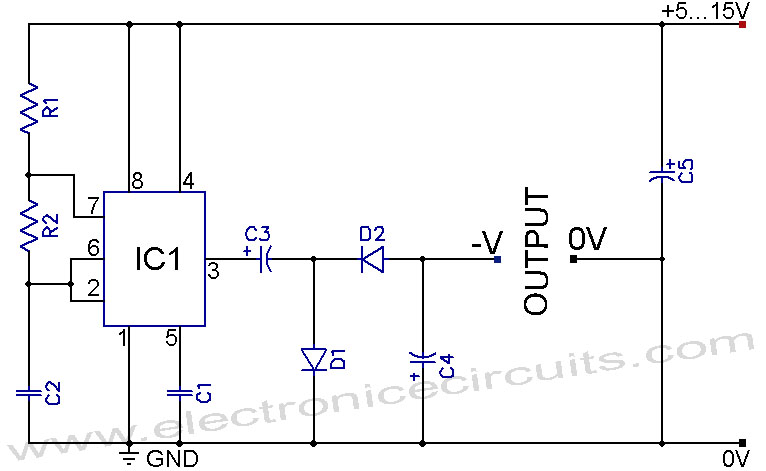
2x22W Car Audio Amplifier Circuit
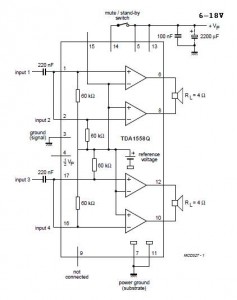
A 2x22 W car audio amplifier circuit utilizes the TDA1558, a monolithic integrated class-B output power amplifier that includes four 11 W single-ended amplifiers or two 22 W bridge-tied load (BTL) amplifiers.
The TDA1558 is designed to drive speakers in automotive audio systems, providing high-quality sound reproduction with efficient power management. The circuit can be configured in two primary ways: as a dual-channel amplifier delivering 22 W per channel or as a single-channel BTL configuration that effectively doubles the output power to 22 W by utilizing both channels in a bridged arrangement.
The amplifier operates within a voltage range typically from 12 V to 14.4 V, suitable for automotive applications. The TDA1558 features built-in thermal protection, short-circuit protection, and overload protection, ensuring reliability and durability under varying operating conditions. The output stage employs a class-B configuration, which helps minimize distortion while maximizing efficiency.
In terms of external components, the circuit requires a few passive elements, including resistors and capacitors, to stabilize the power supply and filter out noise. The use of appropriate bypass capacitors is essential to maintain signal integrity and prevent oscillations. Additionally, the layout of the PCB should be carefully designed to minimize interference and optimize performance.
The amplifier's input stage typically accepts a differential signal, allowing for better noise rejection and improved sound quality. It can be connected to a head unit or a preamplifier in the vehicle's audio system. The output can be connected directly to speakers, ensuring a seamless integration into the car's audio setup.
Overall, the TDA1558-based amplifier circuit is a versatile solution for enhancing automotive audio systems, delivering robust power output with high fidelity sound reproduction.2x22 W car audio amplifier circuit uses TDA1558, a monolithic integrated class-B Output power amplifier contains 4x11W single-ended or 2 x 22 W BTL amplifiers 🔗 External reference
The TDA1558 is designed to drive speakers in automotive audio systems, providing high-quality sound reproduction with efficient power management. The circuit can be configured in two primary ways: as a dual-channel amplifier delivering 22 W per channel or as a single-channel BTL configuration that effectively doubles the output power to 22 W by utilizing both channels in a bridged arrangement.
The amplifier operates within a voltage range typically from 12 V to 14.4 V, suitable for automotive applications. The TDA1558 features built-in thermal protection, short-circuit protection, and overload protection, ensuring reliability and durability under varying operating conditions. The output stage employs a class-B configuration, which helps minimize distortion while maximizing efficiency.
In terms of external components, the circuit requires a few passive elements, including resistors and capacitors, to stabilize the power supply and filter out noise. The use of appropriate bypass capacitors is essential to maintain signal integrity and prevent oscillations. Additionally, the layout of the PCB should be carefully designed to minimize interference and optimize performance.
The amplifier's input stage typically accepts a differential signal, allowing for better noise rejection and improved sound quality. It can be connected to a head unit or a preamplifier in the vehicle's audio system. The output can be connected directly to speakers, ensuring a seamless integration into the car's audio setup.
Overall, the TDA1558-based amplifier circuit is a versatile solution for enhancing automotive audio systems, delivering robust power output with high fidelity sound reproduction.2x22 W car audio amplifier circuit uses TDA1558, a monolithic integrated class-B Output power amplifier contains 4x11W single-ended or 2 x 22 W BTL amplifiers 🔗 External reference
